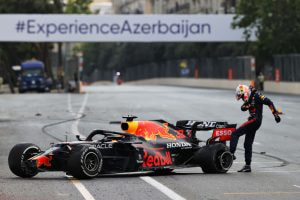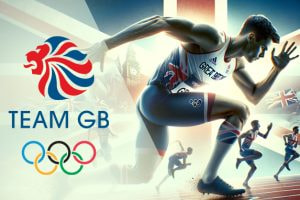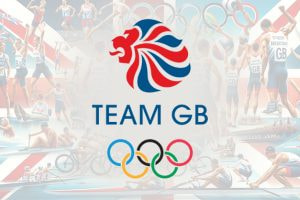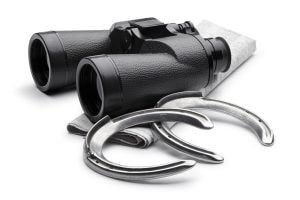Five Champion Greyhounds That Earned Legendary Status
As in all sports, greyhound racing has had many champions. Superstars of their time and adored by the thousands who flocked to see them, but which were the best of the best? An impossible question by any metric. There are scores of worthy candidates, and opinions will differ wildly from one person to another.
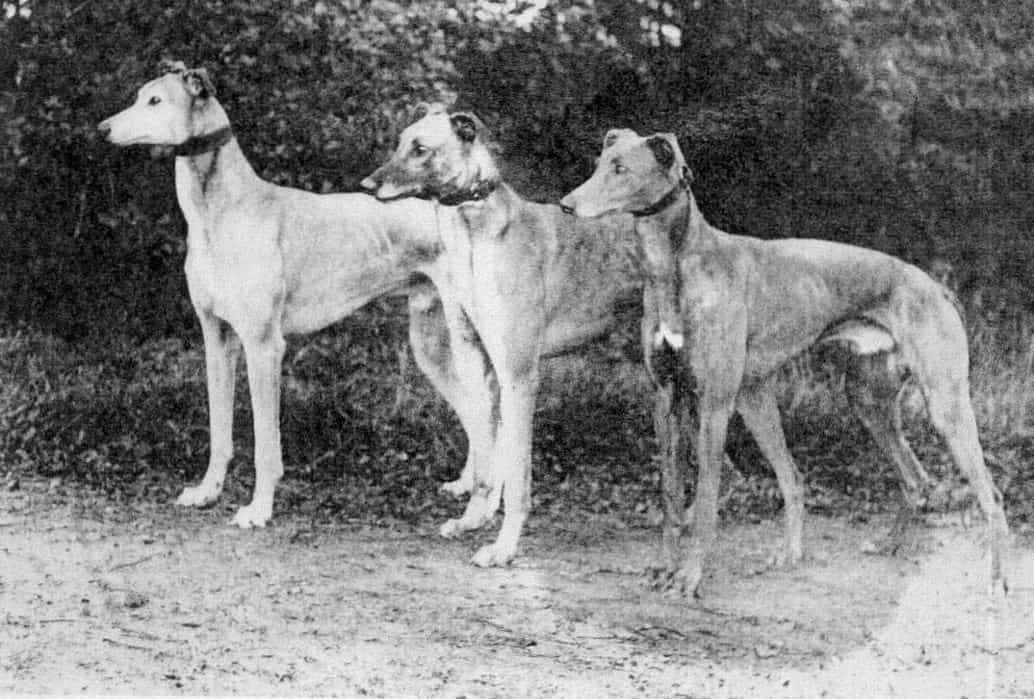
The 1-2-3 finishers in the first Greyhound Derby (1927) pose for the cameras. The sport was only a year old, but by the end of the year, there were 40 tracks in the UK. In 1929, when Mick The Miller won his first English Derby, attendances across the country numbered 15.8 million.
It is a safe bet that three dogs will appear in most greyhound enthusiasts’ top ten list. Who are those three legendary greyhounds? Here, you can read the backstory of this immortal trio and two other canine greats who won four Derby finals between them.
The Champion Who Conquered the Silver Screen
Mick The Miller – Born June 1926 – Died May 1939
The story of Mick The Miller is part of greyhound racing folklore. Named after Mick Miller, the odd job man at the vicarage where the dog was born and raised in Killeigh, County Offaly in Ireland, he became a household name, not just in the UK and Ireland but around the world – an icon of the sport.
Mick The Miller was one of a litter of 10 and was fortunate to ever make the track after being struck down by distemper, a highly contagious and often fatal viral disease which primarily affects dogs.
His owner and breeder, Father Brophy, employed the expertise of Arthur ‘Doc’ Callanan, a veterinary surgeon and manager of Shelbourne Park, a new greyhound track in Dublin, Ireland. Mick The Miller surprisingly survived, and when fully recovered, the nearly two-year-old began his track career at Shelbourne on 18 April 1928.
He easily won his first race and quickly built a considerable reputation, winning 15 of his 20 races at the track. Trainer Mick Horan advised Father Brophy that Mick The Miller was good enough to win the 1929 Greyhound Derby at the famous White City in Shepherd’s Bush, London.
They came to England in May 1929, and after a sensational first outing at the track, he was sold to London bookmaker Albert Williams for £800, an amount that at the time would have bought a desirable house in the area. The sale of Mick The Miller was of such significance that it was well documented in the evening papers that day, and so began the dog’s rise to international fame.
The clamour to see Mick The Miller race would draw crowds comparable to modern-day Premier League football matches, and he did not disappoint. After smashing through the then unachievable 30-second barrier for the 525-yard trip, he made it to his first Derby final.
Rare footage of Mick The Miller c1937 pic.twitter.com/pT78c1oAAA
— Sports & Betting History by BestBettingSites (@CDCHistory) May 21, 2021
He was beaten into second, but the initial decider but that was declared void, and Mick The Miller duly won the re-run. Months later he was sold again. The purchaser was Arundel Hugh Kempton who paid £2,000 for the Derby hero as a present for his wife Phyllis. Mick then joined trainer Sydney Orton for his 1930 campaign.
Unbeaten in 19 With a Second Derby
After a couple of defeats early in the year, Mick embarked on an unbeaten run of 19 races, including the Derby, in front of a huge crowd that included King Alfonso XIII of Spain. He tore a shoulder muscle when bidding for win number 20, but during his winning streak, he broke world records on four occasions, and his exploits were instrumental to the sport’s enormous popularity in the 1930s.
He returned to the track in March 1931 and was soon back to his brilliant best, winning the Spring Cup in record time before eyes turned towards a third crack at the Greyhound Derby. Mick made the final of the sport’s showpiece contest, and he famously ‘won’ it. However, in a cruel twist, it was declared a no-race, and not surprisingly, the ageing Mick The Miller failed to sparkle in the re-run less than an hour later the same evening.
He was never quite the same afterwards but was entered for the 700-yard St Leger at Wembley in September of that year, and the brindled greyhound remarkably went through the event unbeaten and was retired shortly after that classic contest.
Winning 61 of his 81 races and breaking several track records, a very lucrative career at stud followed. Mick The Miller also starred in the 1934 film Wild Boy alongside the famous double act of Flanagan and Allen.
Mick The Miller bronze at his place of birth … pic.twitter.com/UeqwuSJuJL
— Sports & Betting History by BestBettingSites (@CDCHistory) May 7, 2023
After his death on 6 May 1939, Mick The Miller was stuffed and given to the Natural History Museum in London, where he proudly stood until being moved to the Natural History Museum at Tring in Hertfordshire. Mick The Miller’s legend will continue to stand the test of time.
Bob The Perfect Racing Machine
Ballyregan Bob – Born 12 May 1983 – Died 3 April 1994
There cannot possibly be a top-five greyhound list that excludes the remarkable 1980s legend Ballyregan Bob. He was a champion in every sense and helped put greyhound racing back on the map when it was going through troubled times.
He is famous for setting a world record of 32 consecutive wins. His winning streak began on 9 May 1985 at Hove and finished on the same track on 9 December 1986. His journey to the record was astonishing – greyhound betting sites sent Ballyregan Bob off an odds-on favourite in every race during that period and he set or equalled track records a remarkable 14 times.
His winning run nearly ended when he was in all sorts of early trouble in the semi-finals of the St Leger at Wembley when going for win 13. He somehow managed to conjure up the strength to snatch the verdict close home but was found to be lame the following day.
A couple of months of recovery followed, and he was as good as ever on his reappearance at the start of November 1985 when winning by nearly 15 lengths in record time over Hove’s 695-metre trip. He won another seven races before the year’s end, harvesting another five track records.
His trainer, George Curtis, described Ballyregan Bob as “the perfect racing machine”, and after resting through the worst of the winter months, he picked up from where he had left off, winning at home track Hove in his first race of 1986.
He was up to win number 28 come mid-May, but he picked up another injury, which cast a long shadow over the bid to set a new world record. As the months passed, few expected Ballyregan Bob to return to the track. He was a tantalising four wins away from the record. Curtis somehow managed to nurse his star back to fitness, and he won races at Hove and twice at Harringay to equal the record.
It had been a long road, but the stage was set. International TV crews, journalists from all over the globe, and thousands of adoring fans descended on Hove on 9 December 1986 for the Racing Post Challenge.
80’s superstar Ballyregan Bob, winner of 42 of 44 races (breaking 15 track records in the process) and setting a world-record consecutive win sequence of 32. His record breaking run was broadcast live during the BBC’s 9 O’Clock News pic.twitter.com/zmMN6QLTG1
— Sports & Betting History by BestBettingSites (@CDCHistory) August 9, 2018
The race was broadcast live on the BBC’s Nine O’clock News, and it proved no more than a formality as Ballyregan Bob raced into the history books with another runaway success. It was a magical night. Such was his fame, the stuffed Ballyregan Bob now stands side by side with Mick The Miller in the Natural History Museum in Tring.
Swapped for a Cow and Became The People’s Champion
Scurlogue Champ – Born July 1982 – Died 1996
A contemporary of Ballyregan Bob but a starkly different character. There has never been a greater crowd-pleaser before or since Scurlogue Champ, and there will probably never be.
His record was excellent: 51 race wins from 63 English starts that delivered a remarkable 20 track records. But it is how he won his races that set Scurlogue Champ apart and made him one of the most famous and amazing greyhounds ever.
He was often described as “a freak of nature” as he did not fit what racing greyhounds should be. In nearly all his races, Scurlogue Champ seemed to show little interest in chasing the lure and would lollop along many lengths behind the leaders.
However, As the races progressed, he would slowly but surely start to make ground on the leaders and, although seemingly facing an impossible chance of winning, would fly through from lengths off the pace to snatch his wins spectacularly.
He started life on a dairy farm in County Wexford that John Byrne owned, and when the herd became a little depleted, Byrne swapped the dog for a cow with Wexford man Jim Sutton, who reared Scurlogue Champ through to his first two winning races in Ireland.
Champ was then sent to the sales at Shelbourne Park. Knocked down to leading trainer Brendan Matthews for 1,500 guineas, he was sold again later in the day to English trainer Ken Peckham, who had flown to Dublin especially to watch the dog trial.
Scurlogue Champ at Wimbledon – June 28th 1986 pic.twitter.com/nFbLndeETB
— Sports & Betting History by BestBettingSites (@CDCHistory) December 28, 2021
Scurlogue Champ won his first race in England at White City, went on to start favourite in all but three of his 63 starts. He won over distances between 663 metres and 888 metres taking the BBC TV Trophy twice. A greyhound that could be 20 lengths behind and still come through to snatch victory, he was a freak. The likes of this crowd-pleasing greyhound may never come again.
A Modern-Day Greyhound Derby Winning Legend
Westmead Hawk – Born May 2003 – Died 26 May 2014
Breeding and training legend Nick Savva sent Westmead Hawk out to win the English Greyhound Derby in 2005 and 2006, making the dog the fourth back-to-back competition winner after Mick The Miller, Patricias Hope, and Rapid Ranger.
Quote of The Day:
“Westmead Hawk is last at the moment and has a lot on his plate”pic.twitter.com/HJ6Fc5upGe
Errol Blyth
— Ben Keith (@BenStarSports) July 13, 2023
Westmead Hawk was the perfect greyhound. Elegant, alert and with a mastery of the track rarely seen. Although he seldom led when racing against the top-class company, he had an uncanny ability to pick his way past rivals in his races. He possessed devastating finishing power, which became his trade mark.
He was another real crowd-pleaser, and such was his fame that he became a permanent fixture at Madame Tussauds Waxworks and was the subject of a fascinating hour-long TV documentary.
A Unique Derby Double Makes Tom One of the Best
Toms The Best – Born June 1995 – Died 2008
The only greyhound to win the English and Irish Greyhound Derby deserves special recognition in any list of greats. Toms The Best won the Irish version at Shelbourne Park in 1997 after unbeaten runs through the Midland Gold Cup at Monmore and the Sussex Cup at Hove.
He was another greyhound that could produce spectacular whirlwind finishes. He relied on his strength to progress to the final at Shelbourne, where his power in the second half of the race saw him overcome long-time leader Vintage Prince.
His 1998 campaign started with him reaching the finals of the Blue Riband at Wembley and the Scottish Derby at Shawfield. The start of the English Derby at the end of May saw Toms The Best return to the top of his game. And, after having to settle for second best in the first round, he went through the rest of the competition unbeaten.
Toms The Best won the Wimbledon final by over four lengths. That is a feat in itself, and it makes the 21-time winner’s inclusion amongst the ranks of greyhound racing’s biggest-ever stars inevitable.
